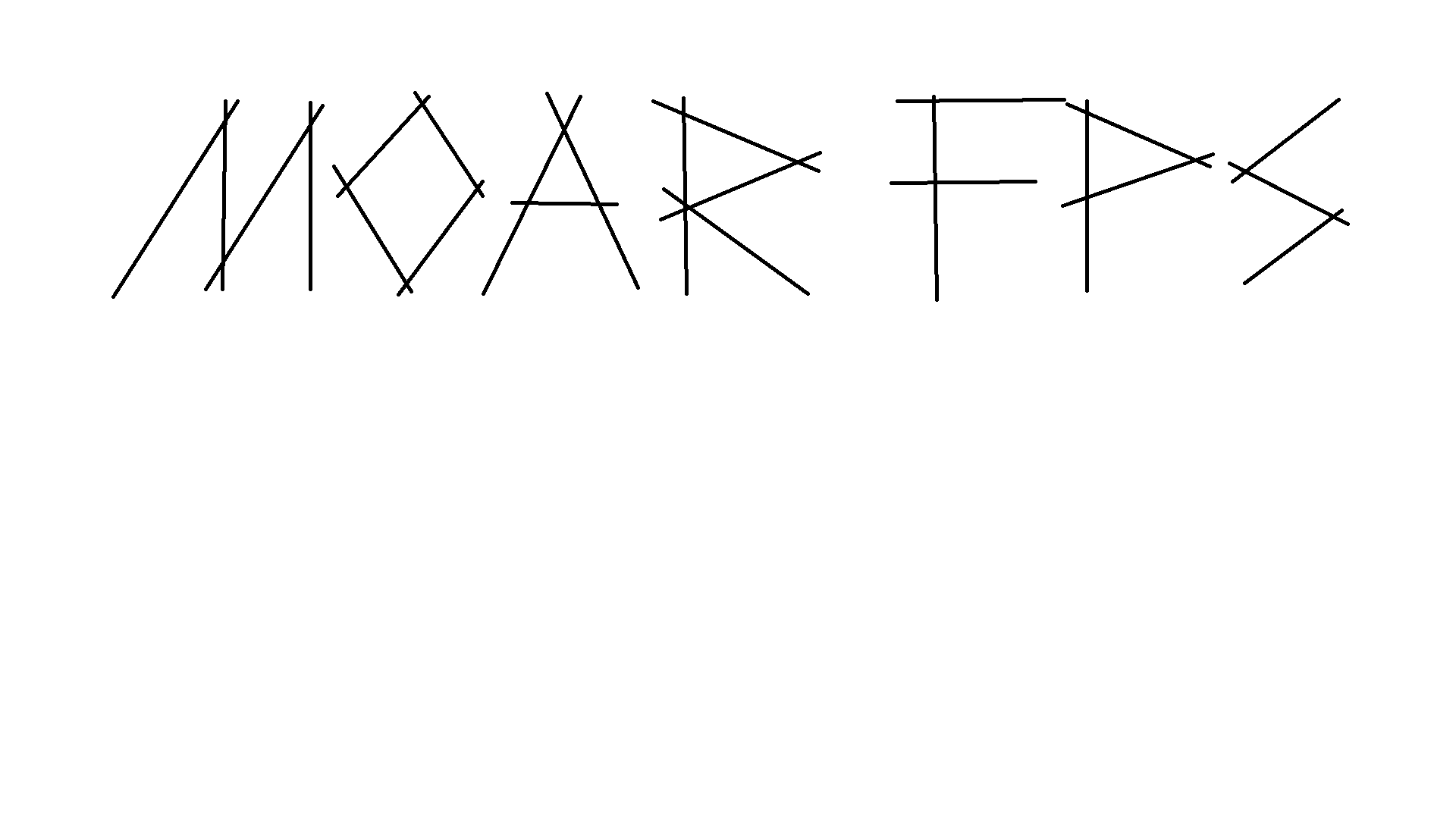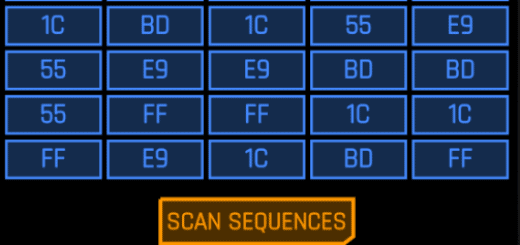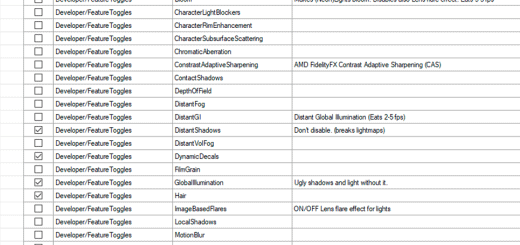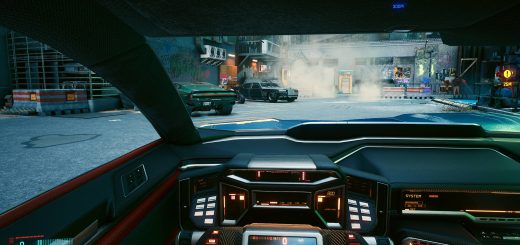Moar FPS
INTRO
Basically a copypaste from my Skyrim guide with updates relevant to cyberpunk. Yes, formatting and errors, I’ll fix that in 3 years as I did for my Skyrim one.
This isn’t a mod. This is a guide for moar fps. These are the collection of things I did that gave me moar fps, it does not guarantee that it will do the same for you. This guide is a work in progress and is my first time posting so please be gentle. This is a beginner’s guide that more experienced users may not need, however in case you didn’t know, here it is.
Step 1 (for Nvidia cards only): NVIDIA GeForce Experience
1) Download NVIDIA GeForce Experience
2) Install it
3) Open it
4) Update your graphics driver
5) Congrats you have moar fps
Step 2 (for Nvidia cards only): NVIDIA Control Panel
1) Open NVIDIA Control Panel
2) Go to Manage 3D Settings
3) Then go to program settings
4) Select Cyberpunk 2077 (cyberpunk2077.exe) from the programs list, if it is not there then add it.
5) Change the settings to the screenshots that are in the files, these are the settings I personally use. You can change a few to get even more FPS if you know what you’re doing. Maximum Pre-Rendered Frames are set to Custom right now because of the steps I will take next, set it to any, or the highest number.
6) Apply these changes
7) Congrats you have moar fps
Step 3 (for Nvidia cards only): NVIDIA Profile Inspector
1) Download NVIDIA Inspector
2) Open it
3) On the right side of the driver version, there will be an icon that opens Driver Profile Settings, open it
4) NVIDIA Inspector will appear
5) Find Cyberpunk 2077 under the drop-down profiles and select it
6) If it isn’t there add it
7) Change the settings to the screenshots that are in the files, these are the settings I personally use. You can change a few to get even more FPS if you know what you’re doing. Maximum Pre-Rendered Frames are set to the highest value of 8 for me, if you feel any input lag (I don’t) lower this value down.
8) Apply Changes
9) Congrats you have moar fps
IMPORTANT
Try to run your game before continuing onward as this will give you the clearest idea of what performance this guide will give you. Start to tweak these settings from the preset the launcher recommends for your system, due to the different varieties in mods, rigs, etc I cannot help you on this, however, do not set the preset to ultra and expect the fps to skyrocket because “this guide says I will get moar fps”. This guide can only do so much, don’t expect your 1060 to run like a 1070, because it won’t. I have only tested these settings and fixes on my system, YMMV. Your system will have a different impact on settings, so treat this as a basis only.
Step 4: Adjusting in Game Settings
1) High Impact Settings: Cascaded Shadows Resolution, Volumetric Fog Resolution, Volumetric Cloud Quality, Screen Space Reflections Quality, Subsurface Scattering Quality, and Ambient Occlusion. Raytracing possibly (GTX 1080 gang)
2) Med Impact Settings: Field of View, Local Shadow Mesh Quality, Local Shadow Quality, Cascaded Shadow Range, and Max Dynamic Decals
3) Low-No Impact Settings: Film Grain, Chromatic Abberation, Depth of Field, Lens Flare, Motion Blur, Contact Shadows, Anisotropy, Distant Shadows Resolution, Color Precision, Mirror Quality, and Level of Detail
Step 4a: FIxes
1) Screen tearing? Turn off V-Sync and Frame Limiter, use Profile Inspector to force vsync and limit fps, included in the file
2) Resolution Scaling? No DLSS for me, however, Dynamic and Static FidelityFX CAS basically reduces your resolution and sharpens them to look as if you didn’t. Highly recommended for lower-end GPUs. Loss in visual quality varies from eye to eye, try it out and see for yourself
3) Static is a constant reduction in resolution I personally set it at 90 and do not see a difference, lower it to increase FPS
4) Dynamic Target FPS should be 60, if your game goes lower than 60 FPS will dynamically reduce your resolution to adapt. Minimum is the max acceptable loss in quality, test this value out in static to get a clearer view, I set it at 70. Maximum is basically static, I set it at 90
5) Film Grain and Depth of Field. Some hate them, but after playing Skyrim and dealing with the shit LODs, they serve the same function as antialiasing, they hide the bad. Consider these if you want to compensate for the loss in resolution scaling. In the end, the settings that are more pleasing to your eyes is what you should go for.
OVERCLOCKING & UNDERVOLTING
Skip this notice and step 5 entirely if you do not want to bother with this. This is a long and tedious process (that can potentially damage your hardware if done incorrectly). Many others have made much better guides than I will attempt to do. My suggestion is that you refer to those guides first, especially those that are tailored to your hardware. I will now attempt to summarize what I usually do. I will reiterate that I am not a professional and that constructive feedback is always appreciated. If you have even a hint of doubt as to whether you should undertake this, do not undertake this. I will not be liable for any damage that occurs to your hardware if you follow this guide (this goes for the entire guide, though those changes are far less risky than what I am about to attempt). This portion of the guide will be done as general and non-specific as possible to encourage users to search for better guides that are more relevant to their hardware. Consider this: If you cannot be bothered to read through this notice, consider that you do not have the patience for this process.
GPU Overclock OR Undervolt? Overclock if you want more straight-up performance at the cost of temps. Undervolt if you find yourself thermal throttling because of higher temps. Increasing the temperature of your hardware will affect the lifespan of your hardware negatively, however, unless you intend to use the hardware way beyond the average lifespan (statistics show 6 years as the average replacement time for desktops in the US), you are unlikely to notice any issues. Therefore the purpose, and only purpose, of both is only moar fps. If you find yourself thermal throttling UNDERVOLT if you do not then OVERCLOCK.
Step 5: Overclocking & Undervolting Preparation
1) Download Heaven Benchmark or any other benchmarking tool, Heaven is good and free
2) Install it
3) Open it
4) Max out the settings
5) Run it
6) Run a benchmark. You can run several benchmarks to get an accurate value of your system’s performance, but this is entirely up to you, the changes that I will be making will be more than significant to notice
Step 5a: GPU Overclocking
1) Download MSI Afterburner or any other overclocking tool, I prefer afterburner
2) Install it
3) Open it
4) The values that you are looking for is Core Clock and Memory Clock
5) Search online for your GPU model and find out what people overclock these values to
6) You can adjust Core Clock values up and down by small increments (10-50MHz) and Memory clock by larger increments (50-100MHz,)
7) Run heaven benchmark to look for any artefacts or crashes
8) If there are any, simply revert the changes and you will find your desired amounts. If you want to be safe consider reducing even more
9) Congrats you have moar fps.. or not
Step 5b: GPU Undervolting
1) Download MSI Afterburner or any other overclocking tool, I prefer afterburner
2) Install it
3) Open it
4) Press CTRL+F
5) Notice where the curve starts to straighten out. That point is where your GPU frequency and voltage operates when you game. The goal is to decrease the voltage needed at that frequency and below
6) Search online for your GPU model and find out what people undervolt by
7) Straighten the line to the specific undervolt that was mentioned and adjust values up and down by small increments (10-50MHz) and adjust the curvature to the new point
8) Run heaven benchmark to look for any artefacts or crashes
9) Save the afterburner profile after every successful setting to revert easily
10) If there are any, simply revert the changes and you will find your desired amounts. If you want to be safe consider reducing even more
11) Congrats you have moar fps.. or not
Step 5c: CPU Undervolting
1) Download ThrottleStop
2) Install it
3) Open it
4) Click FIVR and adjust offset voltage
5) Search online for your CPU model and find out what people undervolt by
6) Adjust offset voltage up and down by small increments (10-50MHz)
7) Run heaven benchmark to look for any artefacts or crashes
8) If there are any, simply revert the changes and you will find your desired amounts. If you want to be safe consider reducing even more
9) Congrats you have moar fps.. or not
Step 6: Get A Better Desktop/Laptop
1) …
THOUGHTS AND UPDATES
And that’s about all I have at the moment, I hope this guide has been helpful in your pursuit of moar fps. I have not included any mods that optimizes textures or any of that because I personally don’t use them at the moment. Please use the comments section if you have problems with the guide, I am not a pro modder of any sort, however, I will try my best to answer your questions.
My Specs (laptop):
Intel i7-8750 HQ
Nvidia GTX 1080
16 GB DDR4
1 TB Samsung 970 PRO
2 TB FireCuda
To do list:
even moar fps
explanations for each setting so you can do your own tweaking
even moar fps
might include links/guides for some stability guides that worked for me
hmm, maybe even moar fps?





